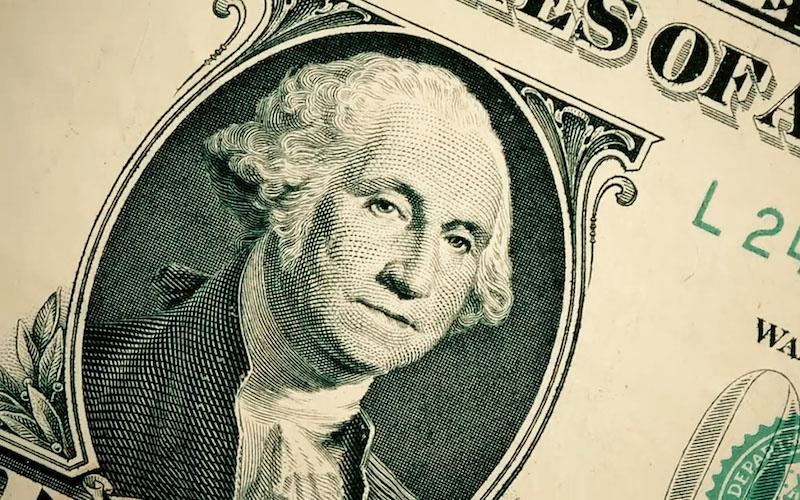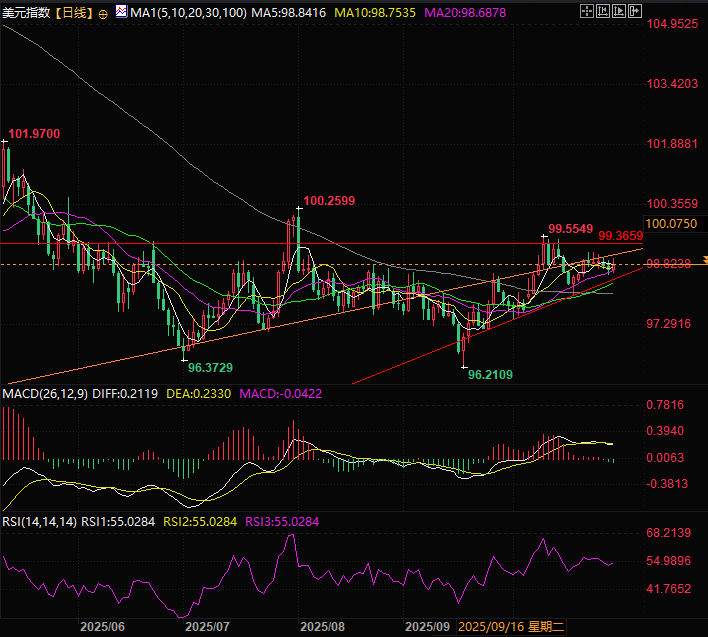Judicial Intervention During Government Shutdown: How Layoff Bans Provide a Buffer for the Dollar
2025-10-29 21:49:49
On Tuesday, U.S. District Judge Susan Ilston of the District of Columbia extended a preliminary injunction, explicitly prohibiting the Trump administration from issuing layoff notices during the government shutdown until the government resumes normal operations. This ruling is a continuation of the temporary restraining order issued on October 15, further preventing the Trump administration from laying off thousands of federal employees during the shutdown.

Previously, President Trump had publicly stated that this government shutdown, now the second longest in U.S. history, presented an "opportunity" to cut what he called "Democratic-affiliated institutions." Furthermore, Russell Vought, director of the White House Office of Budget, Accountability and Reimbursement—one of the drafters of the right-wing policy guideline "Plan 2025"—revealed that the Trump administration's layoff plan was substantial.
Legal constraints, union actions, and responses from various parties in the Trump administration's layoff plan.
The Trump administration not only issued approximately 4,000 layoff notices on October 10, but the total number of federal employees ultimately laid off may "exceed 10,000."
However, Judge Ilston pointed out in his issuance of the temporary restraining order that the government's plan to proceed with massive layoffs during the shutdown was "unprecedented in American history."
This ban stemmed from legal action initiated in advance by the unions representing federal civilian employees.
On the eve of the government shutdown, the American Federation of State, County and Municipal Employees (AFSCME) and the American Federation of Government Employees jointly filed a lawsuit, questioning the Trump administration's plan to "launch large-scale layoffs if federal funding is interrupted."
Several days after the shutdown began, the plaintiffs expanded the scope of their lawsuit, including dozens of federal agencies and their heads in the defendant list. Regarding the judge's latest ruling, AFSCME President Lee Sanders stated that it was "another victory for federal employees" and a significant achievement in protecting employee jobs and combating the government's intent to illegally dismiss them; the American Federation of Government Employees also called it "a major victory for federal employees."
When asked for his opinion on the ruling, the White House only said to refer the matter to the Office of Management and Budget, but the office did not respond immediately.
Skye Periman, president and CEO of Democratic Forward, the legal organization representing AFSCME in the lawsuit, emphasized that Ilston's ruling "deals a major blow to the Trump-Vance administration's illegal attempts to turn the 2025 blueprint into reality," explicitly opposing the government's targeting of "professional public servants who serve all Americans," and arguing that the ban effectively prevented federal employees from continuing to suffer targeted sexual harassment during the shutdown.
The potential link between this judicial ruling and the US dollar index
From a market perspective, the core reason for the impact of this judicial injunction on the US dollar index is that it alleviates the "institutional uncertainty risk" brought about by the game between the US executive power and the judicial system. Institutional stability is one of the key cornerstones supporting the US dollar as a global reserve currency.
First, the judge prevented the government from carrying out disorderly layoffs during the shutdown, avoiding greater chaos for federal agencies (especially those responsible for economic data collection and financial regulation) due to staff losses. The previous government shutdown had already caused delays in the release of several key economic data points, and data transparency is an important basis for the Federal Reserve to formulate monetary policy. Further obstruction of data release could exacerbate market confusion about the interest rate path, thereby disturbing the dollar index.
The ban reduced this risk, provided a more stable environment for the Federal Reserve's policy decisions, and indirectly supported the dollar index in avoiding excessive volatility caused by a "data vacuum."
Secondly, the judicial checks and balances on executive power have strengthened market confidence in the effectiveness of the U.S. separation of powers system.
The long-term trend of the US dollar index is deeply tied to market expectations of the US credit system and governance stability. If executive power is excessively expanded (such as using shutdowns and layoffs to weaken specific institutions), it may trigger external doubts about the resilience of the US system, thereby affecting international capital's willingness to allocate to dollar assets.
This ban demonstrates the judicial system's ability to restrain administrative overreach, alleviating such concerns and helping to maintain the dollar's attractiveness as a safe-haven currency. Especially against the backdrop of high global geopolitical uncertainty, the confidence brought by this institutional stability may become a hidden factor supporting the dollar index.
Furthermore, if large-scale federal employee layoffs were implemented, it could have a short-term impact on the consumer and employment markets (especially since some employees' incomes have already been affected during the shutdown), indirectly dragging down economic expectations; the ban, on the other hand, avoids this additional pressure and reduces the potential negative impact of a deteriorating economic fundamental on the US dollar index.
In summary, this judicial ruling, by reducing institutional risks and stabilizing economic expectations, provided temporary support for the US dollar index and prevented the market panic caused by administrative unrest from impacting the dollar's trajectory.
Technical Analysis:
Observing the daily chart of the US dollar index, we can see that the index is currently running in an ascending wedge and is about to enter the end of the pattern. The direction will be decided at any moment. If it can break through successfully, it can also break through the key price level of 99.36 and then challenge the 100 level of the US dollar index bull and bear lines.
However, it is worth noting that rising wedges often develop downwards because the bulls eventually run out of steam as they try to sustain the upward trend.

(US Dollar Index Daily Chart, Source: FX678)
At 21:45 Beijing time, the US dollar index is currently at 98.83.
- Risk Warning and Disclaimer
- The market involves risk, and trading may not be suitable for all investors. This article is for reference only and does not constitute personal investment advice, nor does it take into account certain users’ specific investment objectives, financial situation, or other needs. Any investment decisions made based on this information are at your own risk.





















